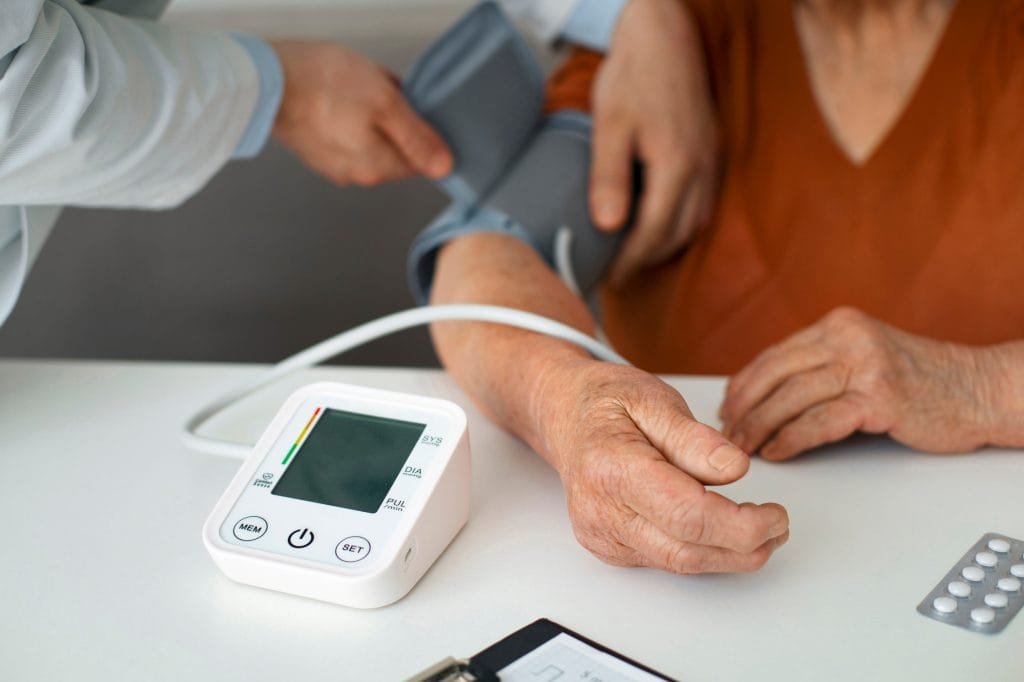Cardiac Care

A heart attack, also known as myocardial infarction, is a medical emergency that requires immediate attention. Knowing the right thing to do at the right time can save a precious life. There are a few ways you can prevent a heart attack and improve the quality and health of your life overall.
In this blog, we will discuss the necessary action plan you can follow in case you face such an emergency. Do not panic and follow the heart attack first aid guide.
A heart attack is a cardiac emergency that occurs when blood flow to the heart muscle is blocked. This blockage in the blood flow may be a result of a buildup of cholesterol, fat or other materials in the arteries. These particles blocking the pathway for blood are called plaque.
They build up over time and make it hard for the blood to reach the heart.
The plaque might even rupture and form a blood clot. This leads to a lack of oxygen in the system. The most common symptoms of a heart attack include chest pain, which moves towards the arms, neck, jaw, or back. A heart attack requires immediate medical attention and is considered a medical emergency.
Though heart attack and cardiac arrest are very often mistaken as the same cardiac emergency, both vary drastically.
While there are several symptoms indicating a heart attack, there are some common symptoms. Some of the most commonly occurring heart attack signs to look out for include:
Since there is a lack of oxygen-rich blood, the heart muscles start dying. The longer the delay, the greater the damage. Timely first aid also reduces the risk of cardiac arrest. The quick medical intervention also increases the chances of survival.
If one is experiencing a heart attack, quick action is needed. Here’s what to do:
The most important step is to call the emergency helpline number. This first step ensures medical professionals arrive on time and provide specialised care. Time is crucial in managing a heart attack, and early intervention can save lives.
Assist the casualty in finding a comfortable position. The ideal position is lying on the floor. The knee can be bent with the head and shoulders supported. You can use cushions to provide support behind their back or under their knees.
If the person is conscious and able to swallow, give them a regular aspirin (not coated), as it can help prevent further clotting. Aspirin thins the blood, reducing the chance of more damage to the heart. However, do not administer aspirin if the person is allergic or has been advised against it by a doctor.
Stay with the person and monitor their symptoms, such as chest pain, shortness of breath, sweating, nausea, or dizziness.
If the person becomes unresponsive and isn’t breathing, start CPR immediately. Begin chest compressions—press down hard and fast in the centre of the chest at a rate of about 100-120 compressions per minute. CPR is helpful in keeping oxygen circulating until emergency responders arrive.
A healthy lifestyle and regular monitoring are necessary to keep heart attacks at bay. Here are key strategies:

Aspirin is a useful medication to treat cases like heart attacks. Taking one tablet of aspirin has been shown to reduce unfavourable outcomes by 30%. Alongside, 4-6 tablets of blood thinners like Clopidogrel and cholesterol medication are useful when a heart attack occurs.
While it is true that men over the age of 45 and women over the age of 55 are more susceptible to heart attacks, the condition can arise in youth also. It may be influenced by factors like lifestyle choices, underlying heart diseases and genetics.
Chest pains are the most common symptoms of a heart attack. But sometimes chest pain and shortness of breath may go unnoticed, such as in the case of a silent heart attack.
Do not wait for the symptoms of heart attack to die down, and seek immediate help. Seek the help of a medical professional promptly. Follow the steps necessary to deal with the condition.
Learning basic CPR and keeping the necessary medication handy can save a life. Share this guide with near and dear ones to spread awareness and save lives. Remember, knowing what to do in a heart attack emergency makes a difference. Be prepared; your quick action could be life-saving.
Regular checkups and consultations can be life-saving. Book your appointment with Atrius Cardiac Care today!